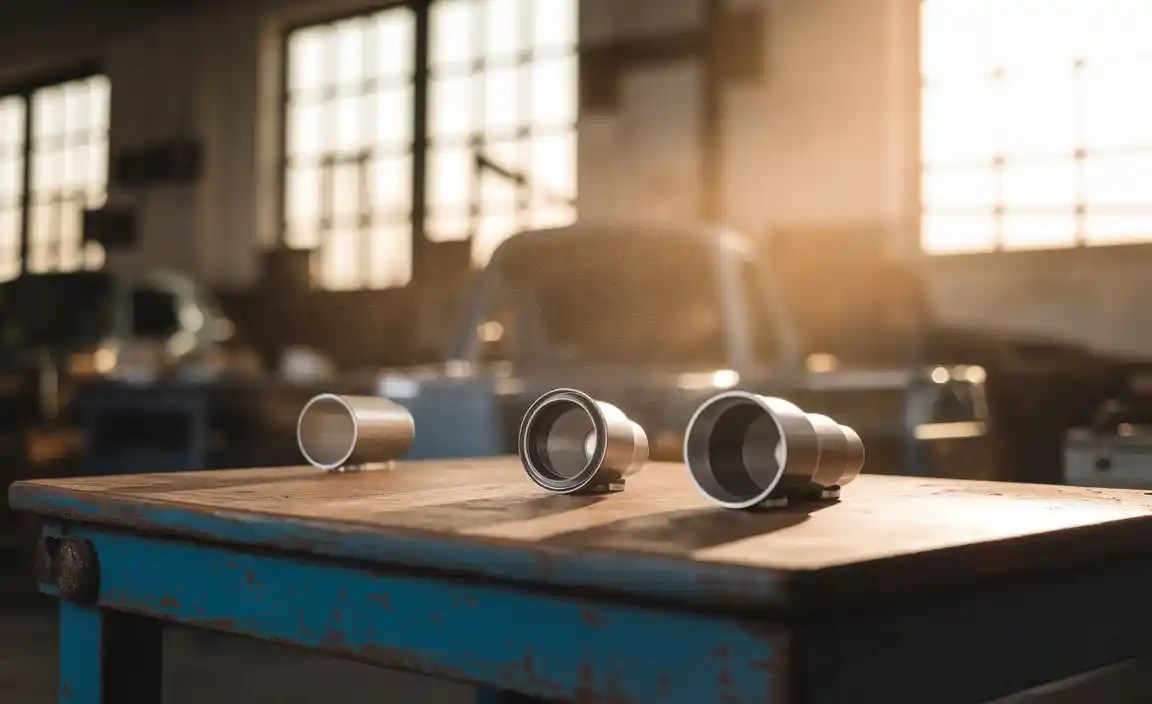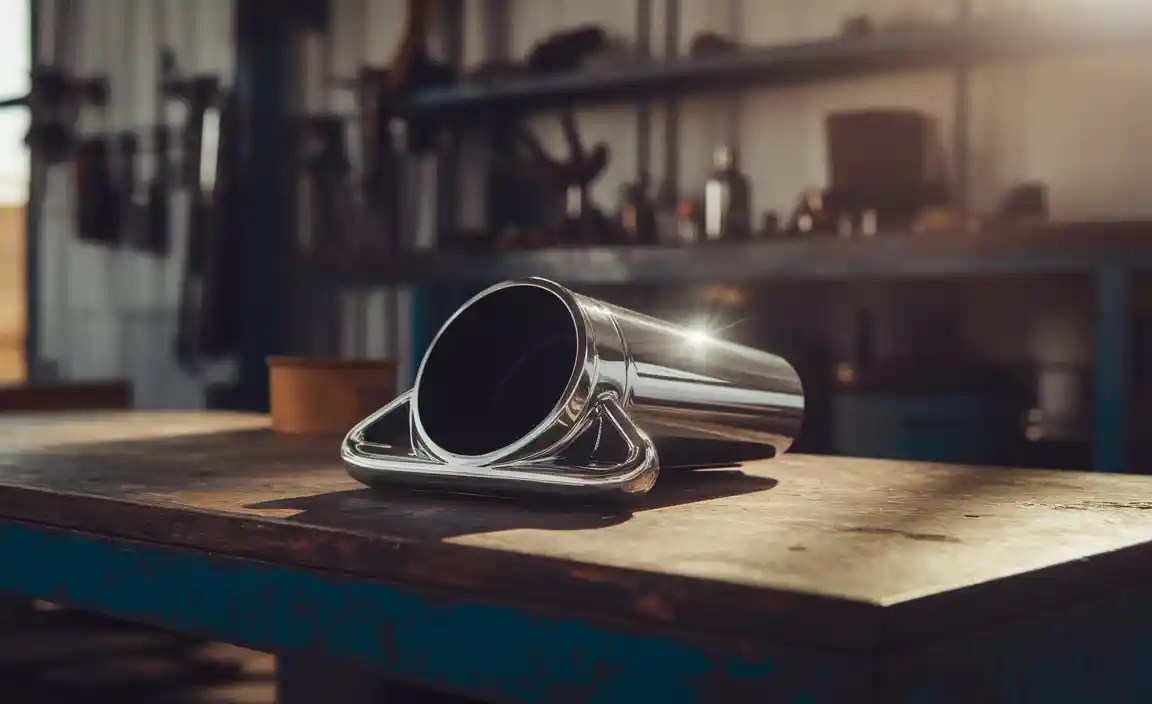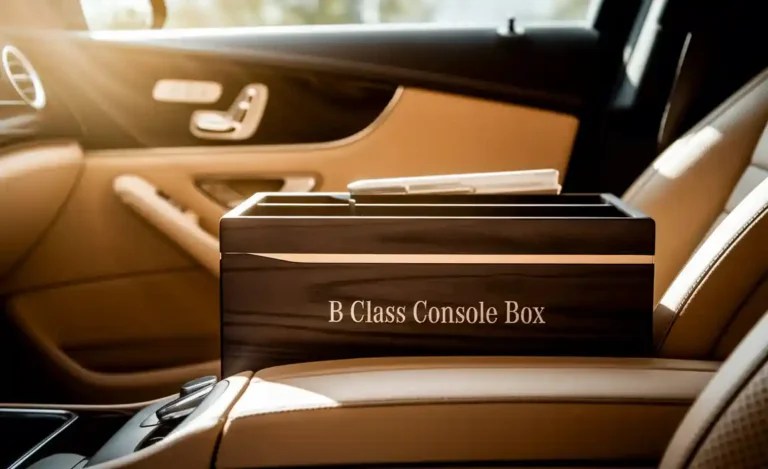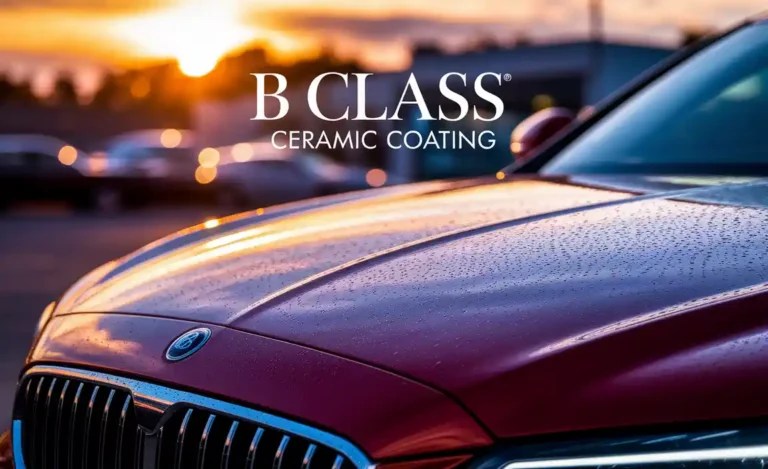B Class Aftermarket Parts: Ultimate Performance
Ready to unlock your Mercedes-Benz B-Class’s hidden potential? This guide dives into aftermarket parts that can significantly boost performance and driving enjoyment. We’ll explore upgrades for engine, suspension, and aerodynamics, providing clear, beginner-friendly advice to help you make the best choices for your B-Class. Get ready to transform your drive!

Your Mercedes-Benz B-Class is a brilliant blend of luxury, practicality, and refinement. But like any vehicle, there’s always room for improvement, especially when it comes to performance. If you’re looking to inject a bit more excitement into your daily drives or enjoy a more engaging, responsive experience, aftermarket parts are your gateway. Upgrading your B-Class isn’t just about raw power; it’s about enhancing handling, improving responsiveness, and tailoring the car to your unique driving style. Don’t worry if you’re new to this; we’ll break down the world of B-Class aftermarket parts, making it easy to understand and navigate. Let’s explore how you can achieve ultimate performance with the right upgrades.
Why Consider Aftermarket Parts for Your B-Class?
The allure of enhancing your Mercedes-Benz B-Class with aftermarket parts stems from several compelling reasons. While the stock B-Class is a competent and comfortable vehicle, aftermarket components offer the opportunity to fine-tune its performance characteristics beyond factory specifications. This could mean a sharper throttle response for more spirited driving, improved cornering stability for confident handling, or even a subtly enhanced exhaust note for a more engaging auditory experience. It’s about personalizing your driving experience and extracting more enjoyment from your already premium vehicle.

Understanding the B-Class Platform
Before diving into specific parts, it’s helpful to appreciate the B-Class’s design philosophy. It’s a compact luxury sports tourer, emphasizing a balance of comfort, utility, and dynamic driving. Its front-wheel-drive (or optional 4MATIC all-wheel-drive) platform, along with its relatively high seating position, provides excellent practicality. However, this also means that certain performance areas can benefit from targeted enhancements. Understanding this baseline helps us identify where aftermarket parts can make the most significant impact.
Key Performance Upgrade Categories for Your B-Class
When we talk about “performance” in the context of car upgrades, we generally refer to a few key areas: power and responsiveness, handling and suspension, braking, and aerodynamics. For the B-Class, these categories offer the most impactful upgrades.

Engine and Powertrain Upgrades
The heart of performance lies within the engine. While the B-Class offers efficient and capable powertrains, aftermarket tuning can unlock additional reserves.
ECU Tuning (Remapping)
This is often the first and most accessible upgrade for performance. An ECU (Engine Control Unit) tune, sometimes called remapping or chipping, involves modifying the engine’s software to alter parameters like fuel injection, ignition timing, and boost pressure (for turbocharged engines).
Benefits:
Increased horsepower and torque.
Improved throttle response.
Potentially better fuel efficiency (if engine mapping is optimized).
Things to Consider:
Choose reputable tuning companies that specialize in Mercedes-Benz.
Understand that aggressive tunes might impact long-term engine wear.
Ensure the tune is compatible with your specific B-Class model and engine.
Performance Air Intakes
A freer-flowing air intake system allows the engine to breathe more easily. By replacing restrictive factory airboxes and filters with high-flow alternatives, more cool air can enter the combustion chambers, leading to a slight power improvement.
Benefits:
Slight increase in horsepower.
More aggressive engine sound under acceleration.
Improved engine bay aesthetics.
Things to Consider:
Opt for systems designed specifically for your B-Class model.
Ensure the intake is properly sealed to prevent hot engine bay air from being drawn in.
Performance Exhaust Systems
Upgrading the exhaust can reduce backpressure and allow exhaust gases to exit the engine more efficiently. This can contribute to a modest power gain and a more desirable exhaust note.
Benefits:
Reduced exhaust backpressure.
Subtle increase in horsepower and torque.
Sportier exhaust sound.
Things to Consider:
Look for systems made from high-quality stainless steel for durability.
Be mindful of local noise regulations.
Suspension and Handling Upgrades
Improving how your B-Class handles corners and road imperfections is crucial for a more engaging and confident driving experience.

Lowering Springs
These replace the factory springs and are designed to lower the vehicle’s center of gravity. This reduces body roll during cornering and gives the car a more aggressive stance.
Benefits:
Reduced body roll.
Improved cornering stability.
More aggressive visual appearance.
Things to Consider:
Lowering springs will make the ride firmer.
Ensure they are compatible with your B-Class’s suspension setup.
May require a wheel alignment after installation.
Performance Shocks and Struts
Pairing lowering springs with performance-oriented shocks and struts provides a more controlled and responsive ride. These components are designed to work together to manage body movement more effectively.
Benefits:
Enhanced damping control.
Better handling and stability, especially over uneven surfaces.
Complements lowering springs for optimal performance.
Things to Consider:
Consider adjustable options for fine-tuning.
Ensure compatibility with your specific B-Class model year.
Sway Bars (Stabilizer Bars)
Upgraded, thicker sway bars reduce the tendency of the car’s body to lean into corners. They connect the left and right sides of the suspension to resist twisting forces.
Benefits:
Significantly reduces body roll.
Improves steering response and agility.
Can be a more subtle way to improve handling without drastically altering ride comfort.
Things to Consider:
A thicker rear sway bar can induce oversteer (making the rear end more prone to sliding).
A thicker front sway bar can induce understeer (making the front end slide).
Performance Tires
While not strictly an “aftermarket part” in the sense of a bolted-on component, high-performance tires are arguably the most impactful suspension upgrade. Sticky, grippy tires provide more traction for acceleration, braking, and cornering.
Benefits:
Dramatically improved grip.
Shorter braking distances.
Increased cornering speeds.
Things to Consider:
Look for “Ultra High Performance” (UHP) or “High Performance” categories.
Consider treadwear ratings (lower numbers mean stickier but wear faster) and weather suitability.
Ensure they are the correct size and load rating for your B-Class. A great resource for understanding tire specifications can be found on the National Highway Traffic Safety Administration (NHTSA) website.
Braking System Upgrades
More power and better handling are only truly effective if you can stop reliably and confidently.
Performance Brake Pads
Upgraded brake pads offer higher friction coefficients and better heat resistance than standard pads. This translates to more consistent braking performance, especially under demanding conditions.
Benefits:
Improved stopping power.
Greater resistance to brake fade.
More direct pedal feel.
Things to Consider:
Some performance pads may produce more dust or noise.
Ensure compatibility with your B-Class’s brake caliper size.
Braided Stainless Steel Brake Lines
Factory rubber brake lines can swell under pressure, leading to a spongy brake pedal feel and reduced responsiveness. Braided stainless steel lines are more rigid and offer a more direct connection.
Benefits:
Firmer, more consistent brake pedal feel.
Improved braking modulation.
Increased durability.
Things to Consider:
Often recommended to be used with high-quality brake fluid.
Installation requires proper bleeding of the brake system.
Aerodynamic Enhancements
While the B-Class isn’t typically a track car, subtle aerodynamic upgrades can improve stability at higher speeds and contribute to the overall performance look.
Front Splitters and Rear Diffusers
These components, often made from carbon fiber or high-quality plastics, can help manage airflow around the car. A front splitter can increase downforce on the front axle, while a rear diffuser can help smooth airflow exiting from under the car.
Benefits:
Can improve high-speed stability.
Enhance the aggressive styling of the B-Class.
Provide a sporty, performance-oriented aesthetic.
Things to Consider:
Ensure they are designed for your specific B-Class model to guarantee proper fitment.
Some larger aero parts might affect ground clearance.
Lip Spoilers
A subtle lip spoiler on the trunk lid can help manage airflow at the rear of the car, potentially enhancing stability.
Benefits:
Improves rear-end stability at speed.
Adds a touch of sportiness to the rear profile.
Things to Consider:
Choose designs that complement the B-Class’s natural lines.
A Table of Common B-Class Aftermarket Performance Parts
To help you visualize the options, here’s a general list of common aftermarket upgrades and their typical impact:
| Upgrade Category | Specific Part | Primary Benefit | Beginner Friendliness | Estimated Cost (USD) |
|---|---|---|---|---|
| Engine/Powertrain | ECU Tune | Increased Power, Torque, Responsiveness | High (Professional Install Recommended) | $500 – $1500 |
| Performance Air Intake | Improved Airflow, Slight Power Gain, Engine Sound | Medium (DIY Possible) | $200 – $500 | |
| Suspension/Handling | Lowering Springs | Reduced Body Roll, Lower Center of Gravity, Sportier Stance | Medium (Professional Install Recommended) | $300 – $700 (Parts) |
| Performance Shocks/Struts | Enhanced Damping, Better Control | Medium (Professional Install Recommended) | $400 – $1000 (Set) | |
| Sway Bars | Reduced Body Roll, Sharper Steering | Medium (DIY Possible) | $300 – $600 (Set) | |
| Performance Tires | Enhanced Grip, Braking, Cornering | High (Professional Mount/Balance Recommended) | $600 – $1200 (Set of 4) | |
| Braking | Performance Brake Pads | Improved Stopping Power, Fade Resistance | Medium (DIY Possible) | $150 – $400 (Set) |
| Braided Steel Brake Lines | Firmer Pedal Feel, Better Modulation | Medium (Professional Install Recommended, Requires Bleeding) | $100 – $300 (Set) | |
| Aerodynamics | Lip Spoiler/Splitter | Styling, Minor Aerodynamic Effect | Medium (DIY Possible with Adhesive/Bolts) | $150 – $500+ |
Note: Costs are estimates and can vary significantly based on brand, specific vehicle model, and labor rates.
Choosing the Right Aftermarket Parts: A Step-by-Step Approach
Navigating the world of aftermarket parts can feel overwhelming. Here’s a structured approach to help you make informed decisions:
Step 1: Define Your Goals
What do you want to achieve? Are you looking for a bit more pep in your step for daily driving, or do you want to improve handling for more spirited excursions? Be specific.
- Goal: More responsive acceleration.
- Potential Upgrades: ECU tune, performance air intake.
- Goal: Better cornering and less body roll.
- Potential Upgrades: Lowering springs, performance shocks, sway bars, performance tires.
- Goal: Improved braking confidence.
- Potential Upgrades: Performance brake pads, braided brake lines.
Step 2: Research Reputable Brands and Suppliers
Not all aftermarket parts are created equal. Look for brands with a proven track record, especially those that specialize in Mercedes-Benz or European vehicles. Forums dedicated to Mercedes-Benz ownership can be a treasure trove of real-world user experiences and brand recommendations. Reputable online retailers often have detailed product descriptions and customer reviews.
- Key Considerations:
- Quality of materials.
- Engineering and design specific to your B-Class model.
- Warranty and customer support.
- Positive user reviews and testimonials.
Step 3: Prioritize Your Upgrades
If you have a limited budget, it’s wise to prioritize. For most drivers, improving handling and braking offers the most noticeable and beneficial gains in overall driving experience and safety, more so than pure engine power.
A common upgrade path for enhanced performance is:
- Performance Tires: The foundation for all other upgrades.
- Suspension Components (Springs/Shocks/Sway Bars): To improve body control.
- Brake Upgrades (Pads/Lines): To ensure you can stop effectively.
- ECU Tune/Intake/Exhaust: For increased power and responsiveness.
Step 4: Consider Installation
Some upgrades, like intake systems or minor trim pieces, can be DIY-friendly for those with basic mechanical skills. However, critical components like suspension, brakes, and ECU tuning often require specialized tools, knowledge, and experience.
When to Seek Professional Help:
- You lack the necessary tools or garage space.
- The installation is complex (e.g., suspension overhaul, brake bleeding).
- ECU tuning, which requires specialized equipment and expertise.
- You want to ensure the job is done correctly the first time to avoid costly mistakes.
If you’re in doubt, always consult a qualified mechanic or a reputable tuning shop specializing in Mercedes-Benz vehicles. Organizations like the National Institute for Automotive Service Excellence (ASE) can help you find certified professionals.
Step 5: Balancing Performance and Comfort
It’s crucial to remember that the B-Class offers a certain level of comfort. Aggressive performance upgrades, such as very stiff suspension or track-focused tires, can significantly alter the ride quality, potentially making it harsher for daily use.
Finding the Balance:
- Sport-Tuned but Livable: Opt for suspension kits labeled “sport” or “comfort sport” rather than pure “track” setups.
- Moderate Tire Choice: Select UHP tires with a treadwear rating that balances grip with longevity and noise levels.
- Progressive Upgrades: Introduce changes gradually to understand their impact on ride and comfort.
Frequently Asked Questions (FAQ) about B-Class Aftermarket Parts
What is the most impactful aftermarket upgrade for a Mercedes-Benz B-Class?
For overall driving experience and safety, high-performance tires are often considered the most impactful. They directly improve grip for acceleration, braking, and cornering, making a noticeable difference in how the car feels and performs.
Can aftermarket parts void my Mercedes-Benz warranty?
Potentially, yes. If an aftermarket part fails and causes damage to a covered component, the manufacturer may deny a warranty claim. However, simply installing an aftermarket part does not automatically void your entire warranty. It’s best to research specific parts and consult your dealer or warranty provider.
Is ECU tuning safe for my B-Class engine?
When performed by a reputable tuner using quality software developed specifically for your B-Class engine, ECU tuning is generally safe. Overly aggressive tunes that push components beyond their designed limits could reduce engine longevity. Always choose a tuner with excellent reviews and expertise.
Will lowering springs make my B-Class ride too harsh?
Yes, lowering springs typically result in a firmer ride because they are shorter and often have a higher spring rate. However, the degree of harshness depends on the specific springs chosen and if they are paired appropriately with performance shocks and struts.
Are performance exhaust systems very loud?
The loudness varies greatly by manufacturer and model. Some systems offer a subtle, sporty tone






